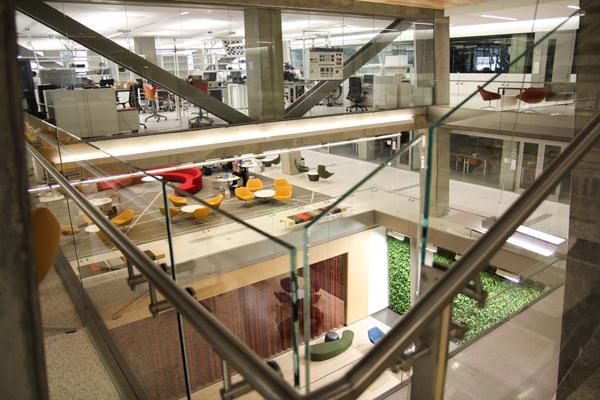When you arrive on campus in the fall, getting adjusted to college life can take some time. A great way to feel settled quickly is to know the ins and outs of your school. Each of GW’s four most common schools for undergraduate students have their own career portals and academic advisers, but they also each have more fun perks for their own students.
Columbian College of Arts and Sciences
Home to more than 50 possible majors, most incoming freshmen will find themselves as CCAS students. Although students in other schools can take CCAS courses, dean’s seminars are only available to CCAS students.
Each year there are about 10 dean’s seminar courses, with topics ranging from constitutional law to classical ballet. While these courses are not required for freshmen, students can take them to fulfill some G-PAC requirements or to learn more about a new topic.
Taught by distinguished faculty and field experts, these seminars tend to be in high demand among incoming freshmen. The smaller class sizes permit more direct student-faculty interaction – something that is often hard to find during freshman year, which is usually dominated by big lectures. These seminars definitely fill up fast, but if you get the chance, sign up to explore a topic of interest outside of your major.
School of Engineering and Applied Science
The most notable addition the School of Engineering and Applied Science is the recently completed Science and Engineering Hall, which is centrally located on campus and home to several core lab facilities, which are open to SEAS undergraduates. If you walk past the building on 23rd Street, you may find yourself looking through a massive glass wall at the “high bay” – a three-story, reinforced lab complete with a 20-ton crane, loading bay and machine shop.
SEAS students can use the high bay to work on large-scale projects, like bridge beams and plane parts. Upstairs, students will find the five microscopy suites and the brand new nanotechnology teaching lab, recently built and funded by the National Science Foundation. The building is also home to a climate-controlled rooftop greenhouse, which is set to open this fall.
Take advantage of the new building and the chance to design and test student-run projects in specific courses this fall.
School of Business
Incoming undergraduates in the business school should check out the Phillips Student Investment Fund (PSIF), which is designed to teach students applied investment. PSIF manages approximately $1.4 million in assets and investments, and students learn more about creating a successful portfolio. Although this program is certainly competitive and accepts only a dozen students per semester, it is definitely worth looking into for students serious about investment.
Elliott School of International Affairs
Although the school’s headquarters may be on the furthest edge of campus, it is worth the walk for a chance to complete independent research through the undergraduate scholars program that is limited to Elliot School of International Affairs students.
Students who elect to join the program work closely with their own faculty advisers and graduate student mentors in preparation to present their research at the on-campus spring academic conference. Although the program is only available to juniors, interested students can register for the prerequisite courses now to start brainstorming research ideas.
The program provides the opportunity to publish work in an academic journal, and students research stipends start at $500.







